Marketing Analytics Strategist
Adobe Analytics takes a step forward in its attribution analysis with IQ Attribution and Workspace
Marketing Analytics Strategist
Attribution is defined by the action of giving credit to the various touchpoints in the user journey. It is used, among other things, to effectively coordinate the budgets of marketing campaigns, the amounts invested between content, SEO or any other optimization activity of your company. In summary, attribution analysis tries to answer the magic question: which of your initiatives contribute the most to achieving your business objectives?
Jean-François Renaud talked about it in his article with the shoe store . Personally, I prefer the analogy of the hockey team. Who should be given the most credit for winning the match? To the striker who scored? To the defender who stole the puck from opposing players? To the goalie who stopped the pucks?
To be fair, you don't just want to reward the scorer, you also want to reward the other players without whom the scorer couldn't have "finished the job". Thus, there is not just one, but many attribution models, each with a bias.
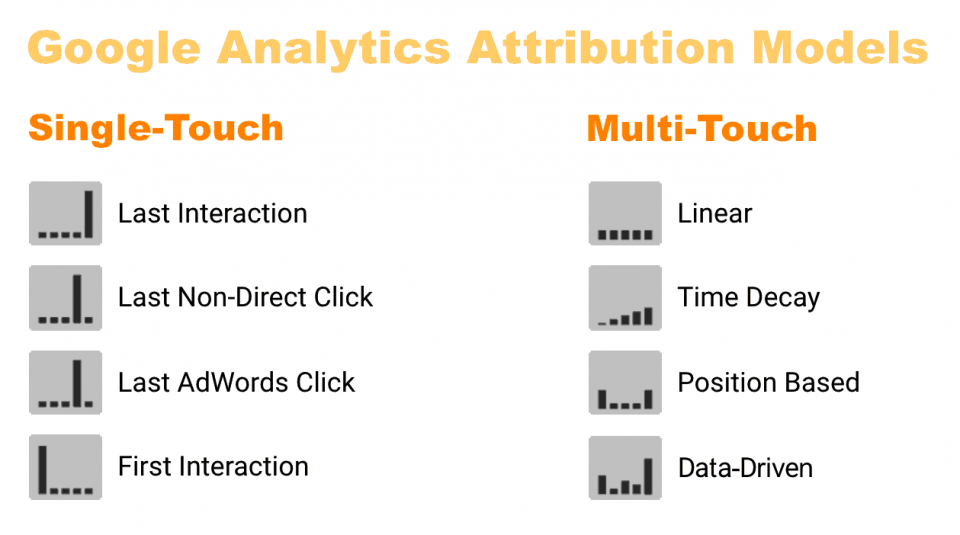
A long-standing feature of onsite measurement solutions , attribution models in Adobe Analytics were previously limited to first touch and last touch . By default set to 30 days, it could be complex to analyze the user journey according to the type of source in their customer journey, because we only had the first and last touchpoints available, but not what went between the two.
-png.png)
To have this in-between, it was necessary to perform complex and sometimes costly tasks, either in the platform or via external tools. Finally, another weakness of the majority of tools on the market is that they offer transaction-based attribution only. Adobe has been able to differentiate itself and better meet user needs by developing the Attribution IQ tool deployed in summer 2018.
“Adobe hits very hard with this tool because on the one hand, the attribution can be done on any metric, so we can now analyze transactions but also any other metric measured by an event, and this , with no time range limit. On the other hand, the integration of the solution with Workspace makes it possible to analyze the attribution results on the spot with all the variables available in your analytics solution.”
CONCRETELY, WHAT IS ATTRIBUTION IQ?
This is a new feature available through the Workspace data analysis tool that allows comparing the attribution of a conversion based on a chosen model . It can be used via two methods, in a table visualization, via a freeform table (on the left), or via the IQ attribution panel (on the right).
-png.png)
The main difference between the two is that the panel builds widgets by default, while the freeform, which allows more customization, is to be configured manually.
WITH THE FREEFORM TABLE:
One way to use the tool is to make a table using your marketing channels as a dimension and your success event as a metric. Note that the sources here are credited with your default attribution model, the last touch defined by your marketing channels .
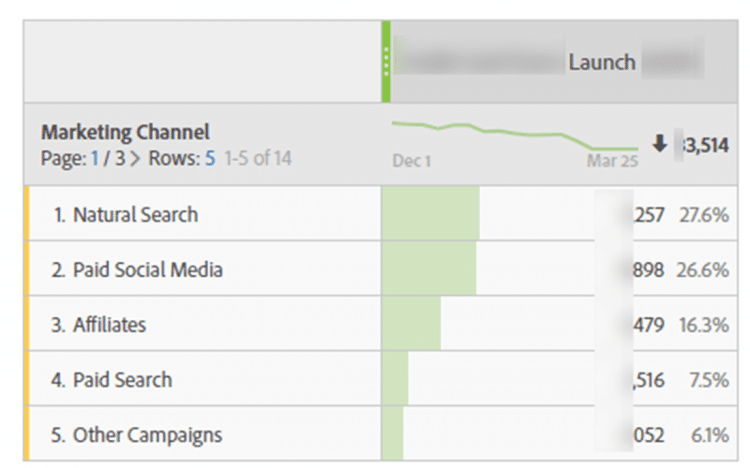
You will then have to click on the cogwheel of your metric, and check the non-default attribution model box.
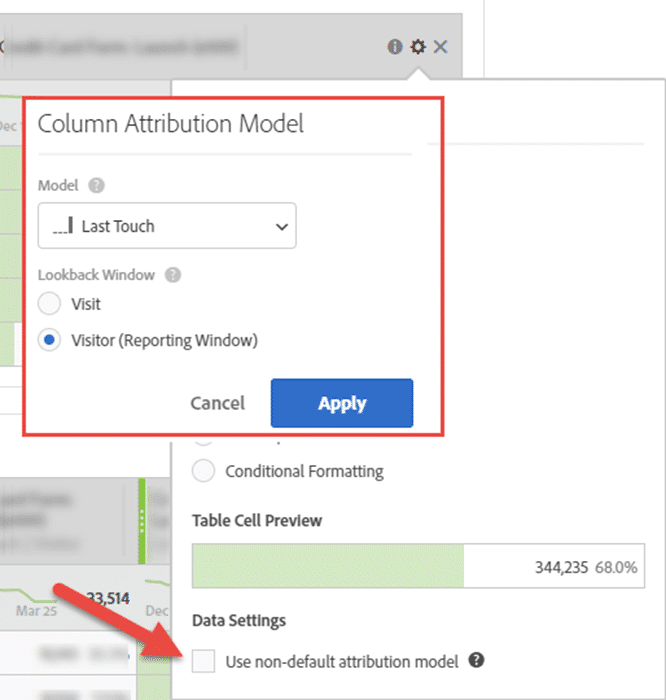
This is where the attribution model is chosen, as well as the lookback window , to the visit or to the user.
Ten models are currently available, including one custom.
Once these steps are done, the column presents the data with the chosen attribution model. One of the possibilities is to compare them with each other.

With the dedicated panel, simply let yourself be guided by Workspace, then select, as in the freeform, the scope (visit or user) and select the relevant attribution models.
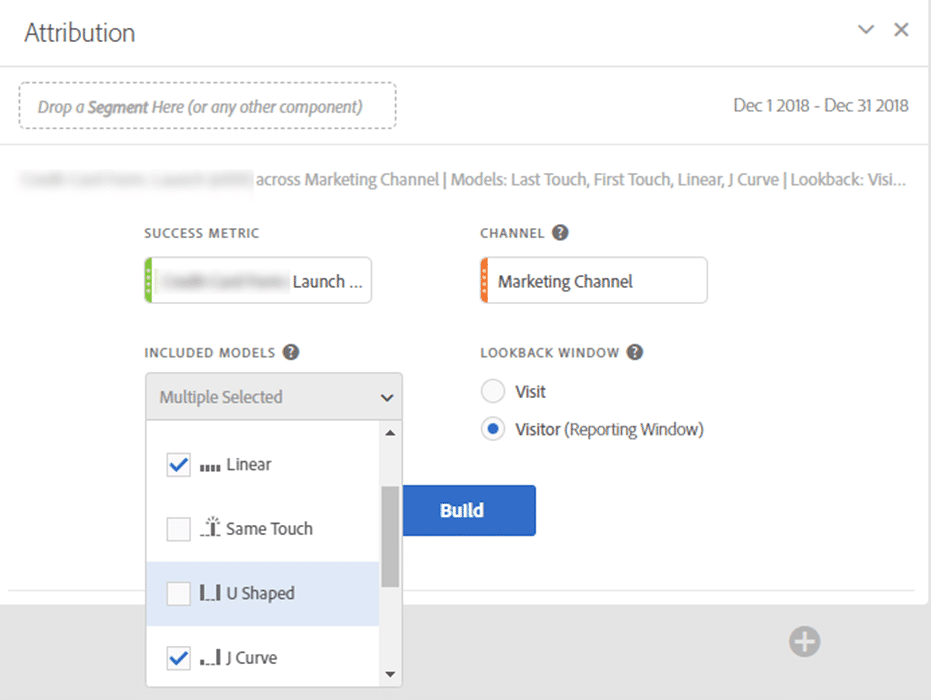
These steps create a set of widgets in your workspace:
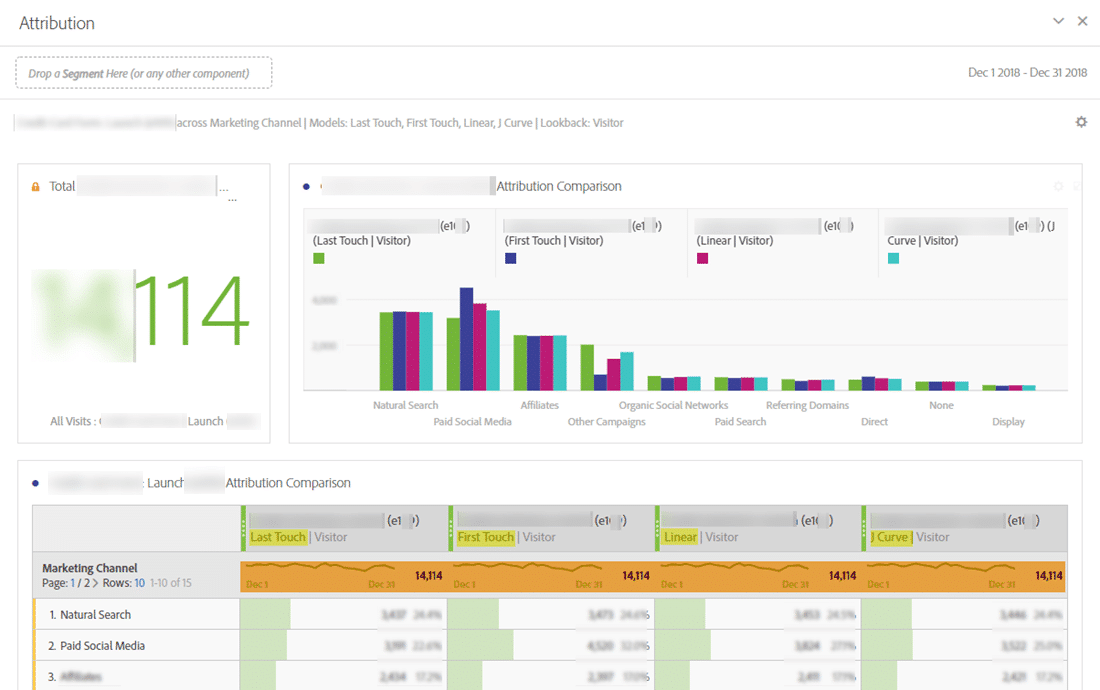
HOW TO INTERPRET THESE RESULTS?
The line highlighted in orange in the image above displays all conversions. The lines below show the credit given to each of the traffic sources according to the chosen attribution model.
Several other visualizations are also built, allowing you to visualize your data with all the power and diversity offered by Workspace :
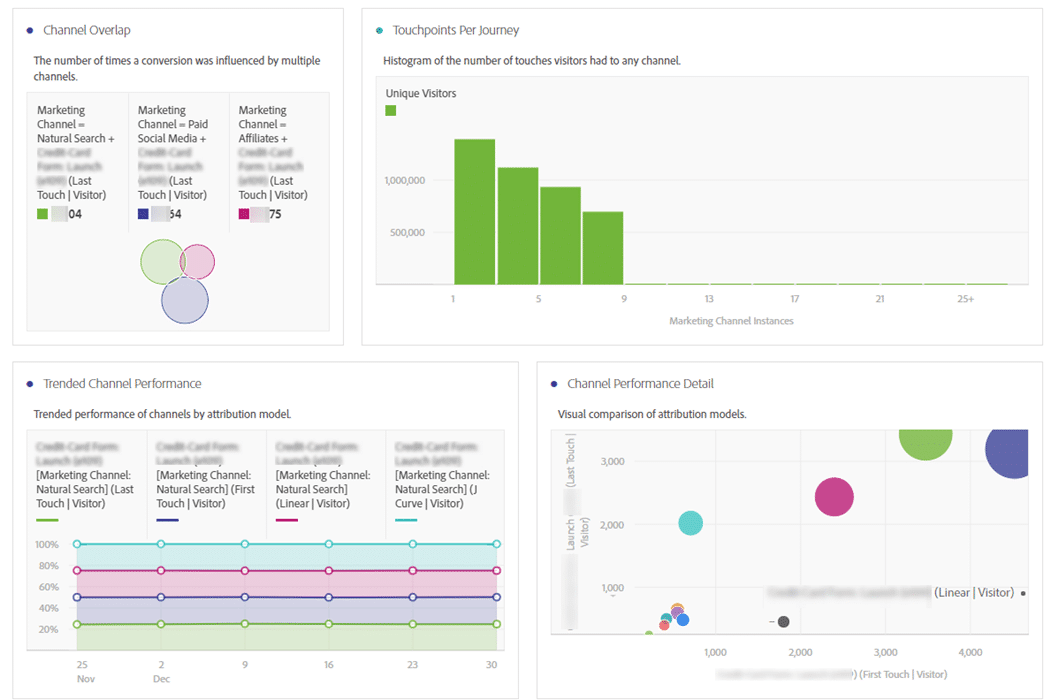
In conclusion, Adobe Analytics offers a tool that combines power and flexibility.
Have questions about this new feature in Adobe Analytics or about attribution in general? Do not hesitate to contact us!

-1.png)







